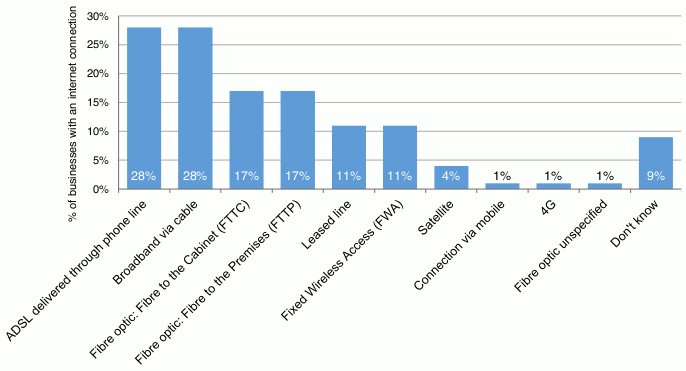Digital Economy Business Survey 2021: findings
Summary of findings from the Digital Economy Business Survey (DEBS) 2021. This publication includes the high level DEBS report, accompanying data tables and the Digital Economy Maturity Index 2021.
Digital Connectivity
- The Scottish Government’s refreshed Digital Strategy - A changing nation: how Scotland will thrive in a digital world sets out the vision for Scotland as a vibrant, inclusive, open, greener and outward-looking digital nation to ensure that it continues to prosper in an increasingly connected and competitive world.
For Scotland to thrive in this digital world, our response must embrace three key opportunities: designing and implementing technology in a secure, efficient and user centred way, realising the potential of data to improve services, increase efficiency and deliver better outcomes, and transforming our culture and the way we work through digital thinking, with its emphasis on openness, networking and agility. We want Scotland to be a fully digitally inclusive nation in which our digital and data infrastructure is recognised as critical national infrastructure and the benefits of technology are available to everyone.
This section looks at the take up of standard and next generation broadband among businesses in Scotland, and the reasons why businesses without internet access are not connected.

Base: Businesses with an internet connection (min = 3,271)
Multiple responses allowed
Internet take up (see Figure 1)
- In total, 97 per cent of businesses surveyed in 2021 had an internet connection, unchanged from 2017, but higher than 94 per cent of businesses surveyed in 2014.
- Among businesses with an internet connection, the most common types of connection was ADSL delivered via telephone line (28 per cent) and broadband via cable (28 per cent).
- 33 per cent of businesses had any fibre connection, an increase from 28 per cent in 2017.
- 21 per cent of businesses with an internet connection reported to having a download speed between 30Mbit/s and 1Gbit/s. Two per cent had a download speed up to 2Mbit/s, while three per cent had a download speed over 1Gbit/s. 58 per cent did not know their download speed.
- Among businesses that had internet access, 22 per cent stated that they were fairly or very likely to improve their connection in the next 12 months. Around two-thirds (66 per cent) were fairly or very unlikely to do so.
- Of those businesses planning on getting or improving their internet connection, the majority (85 per cent) reported that they expected their organisation could benefit from increased efficiencies/ productivity. 30 per cent expect to provide a more reliable service for customers by acquiring/ improving their internet connection.
Businesses with no internet connection
- Among those businesses that did not have an internet connection (three per cent), only 19 per cent were very or fairly likely to get an internet connection over the next 12 months, if it were available. Three quarters (74 per cent) were very or fairly unlikely to get an internet connection. These findings matched closely to those in the 2017 and 2014 surveys.
- Among those that were unlikely to get an internet connection, the most commonly cited reason was that there was no business need (78 per cent), an increase from 65 per cent in 2017. This was followed by set up costs/ cost of connection (12 per cent), lack of broadband/ available connection (seven per cent) and can’t afford to (five per cent).
Contact
Email: Sean.Murchie@gov.scot
There is a problem
Thanks for your feedback